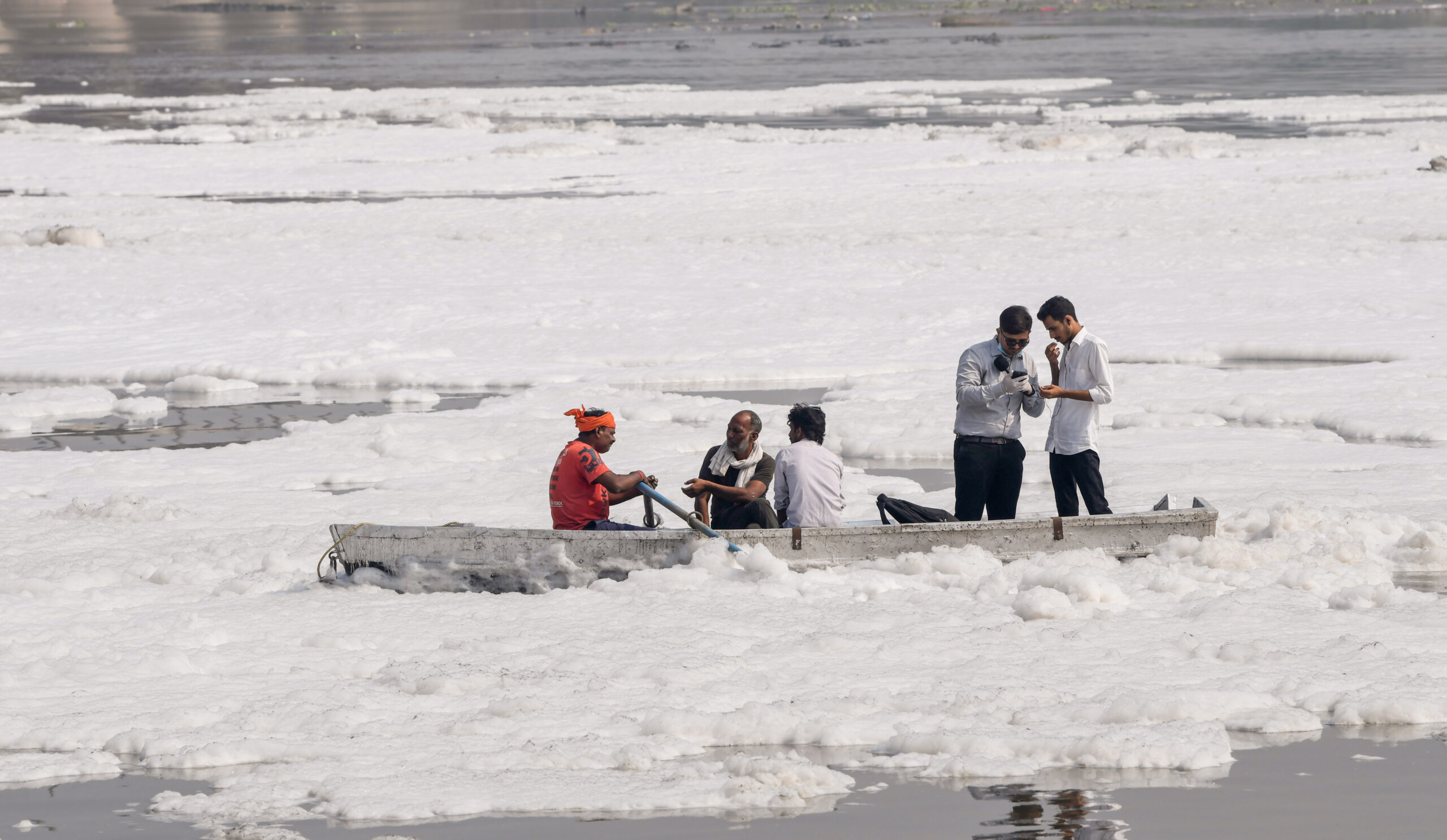Experts have raised alarms about the toxic white froth seen in the Yamuna River. They warn that it contains harmful organic matter that releases volatile gases directly into the atmosphere. The froth formed largely due to untreated wastewater flowing into the river, poses severe environmental and health risks.
Organic Matter and Pollutants Behind Froth Formation
Professor Sachchida Nand Tripathi, Dean of the Kotak School of Sustainability at IIT Kanpur, highlighted that the froth is primarily caused by surfactants from soap, detergents, and other pollutants found in the untreated wastewater discharged into the river. “After the monsoon, the stable atmosphere and rising temperatures create ideal conditions for froth formation. As temperatures drop in October, the froth becomes more stable, and it releases harmful organic matter into the atmosphere,” Tripathi said.
The froth contains volatile organic gases and semi-volatile organic compounds, which act as precursors to secondary organic particulate matter, further worsening air quality.
The presence of froth in the Yamuna is not only a threat to air quality but also to aquatic life. Professor Tripathi explained that the froth depletes dissolved oxygen levels in the water, making it harmful to fish, algae, and other aquatic organisms. “Froth can kill healthy algae and fish, leading to a decline in aquatic biodiversity,” he added.
Need for Wastewater Treatment and Industrial Regulation
To address the issue, Professor Tripathi called for increased government efforts to expand wastewater treatment capacity, prevent untreated waste from entering the river, and regulate industrial waste disposal through technology. “Raising awareness and regulating activities along the riverbanks are essential steps to tackle the problem of toxic froth in the Yamuna,” he suggested.
An analysis of the Yamuna’s water quality, conducted by researcher Sharma, indicated that organic pollution, particularly from industrial and agricultural runoff, plays a significant role in the frothing problem. Polluted water containing organic compounds can release volatile organic compounds (VOCs), which react with atmospheric oxidants to form secondary organic aerosols (SOAs). These aerosols are influenced by environmental factors such as temperature and humidity, which exacerbate the frothing in polluted urban waterways like the Yamuna River.
Studies show that in areas with high levels of pollutants and surfactants, the potential for organic material to transfer into the atmosphere increases, worsening both water and air pollution.







